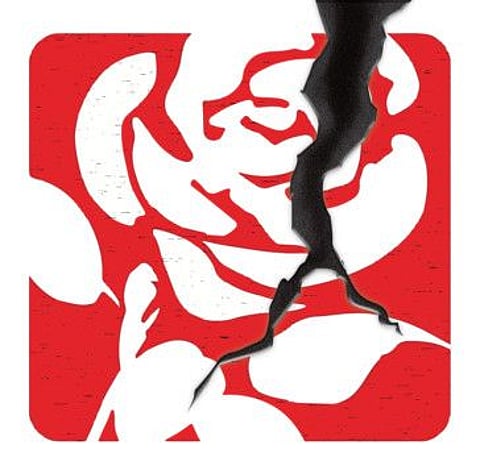How Britain’s Labour Party can be relevant again
The party is electing a successor to its outgoing leader Jeremy Corbyn

Two months after suffering its worst general election result for 84 years, Britain’s Labour Party continues to pick up the pieces. While Boris Johnson’s Conservatives govern with an 80-seat majority in the House of Commons, Labour is simultaneously reflecting on its thrashing and electing a successor to outgoing leader Jeremy Corbyn.
This week saw the publication by Lord Ashcroft — a Conservative peer but whose research is generally accepted as non-partisan — of a report into Labour’s defeat. The report highlighted a number of issues that doomed Labour, including Corbyn’s leadership, the flip-flopping over Brexit, a domestic platform that wasn’t seen as credible and obsession with fringe liberal issues. But the common theme throughout was the party’s failure to listen.
What might the road back to power look like? The first thing Labour obviously needs is a change at the top, and it’s currently in the process of electing new leadership. The contenders are Shadow Brexit Secretary Keir Starmer, Shadow Business Secretary Rebecca Long-Bailey, Shadow Foreign Secretary Emily Thornberry and the former Shadow Energy Secretary Lisa Nandy.
The contest has been very much pitched to the left, which dominates the party membership. This has certainly been the case with front-runner Starmer’s bid, which has turned out to be less moderate than some had expected. Long-Bailey is known as the “continuity Corbyn” candidate, though without the historical baggage.
Labour needs to stop finding people to antagonise. This includes its flip-flopping over Brexit, which upset both supporters and opponents of the UK’s departure from the EU. Brits may be divided, but they largely agreed on when it came to disliking Labour’s policyMatt Singh, British political commentator
Nandy’s pitch is centred around bridge-building to the lost voters, with a relentless focus on towns. Thornberry is regarded as a strong performer in the House of Commons but is struggling to attract much support, and may struggle even to make the ballot.
This raises the question of whether the right debates are taking place. One problem highlighted by the Ashcroft report is the gulf between the general electorate and the Labour membership that choose the leader, even with many new members ahead of the leadership vote potentially narrowing the gap.
But for now it seems difficult for any candidate to carry both the party and the country. (While the Tory Party membership, which chose Boris Johnson last summer, was also a small subset of Conservative voters, it was ruthlessly focused on choosing a candidate capable of winning office.)
At the very least, the new leader will have to pour a lot of cold water on the Corbynites within the party, just as Neil Kinnock did in the 1980s after Labour was crushed by Margaret Thatcher.
Difficult conversations
Secondly, Labour needs to stop ducking the difficult conversations. The period of reflection that Jeremy Corbyn called for when he announced his resignation as the votes were being counted has often seemed more like a period of deflection, with Corbynites blaming almost everything and everyone besides their helmsman.
This includes talking about the cultural divide between where much of the current Labour Party sits and where many of its lost voters sit. It is invariably more comfortable for those on the left to attribute Brexit and the election results to economic factors — yet these are clearly not the main drivers of either result.
Understanding the scale and causes of the election defeat in full is obviously painful for a party in this position. But it is necessary. So besides the debate around what social democracy should mean in a modern post-industrial economy, there are also debates to be had about reconnecting with lost voters, many of whom have very different values to the party they once considered theirs.
Thirdly, Labour needs to stop finding people to antagonise. This includes its flip-flopping over Brexit, which upset both supporters and opponents of the UK’s departure from the EU. Brits may be divided, but they largely agreed on when it came to disliking Labour’s policy.
It also encompasses the party’s perceived obsession with fringe issues, which has often done it more harm than good. A conference motion critical of the Indian government over Kashmir provoked a backlash among some of the Indian diaspora in Britain, to no apparent upside.
The Israel-Palestine debate may be of huge interest to Labour members, but is hardly the talk of the town in the rust belt districts that turned so decisively against Labour in December.
The road is certainly long — after 1983 it took 14 years before Tony Blair finally took Labour back into power. The challenges are arguably greater now — the hard left is more in control of party structures, the battle is on multiple fronts against the Conservatives in England and Wales and against the Scottish National Party in Scotland, and the challenges go well beyond policy into more awkward, cultural issues.
But there are also potential opportunities. The next phase of Brexit could go wrong, the economy could go stutter, among other things. Labour needs to be ready to seize any that come along.
— Bloomberg
Matt Singh is a political commentator and runs Number Cruncher Politics, a non-partisan election site that predicts UK poll results
Sign up for the Daily Briefing
Get the latest news and updates straight to your inbox



